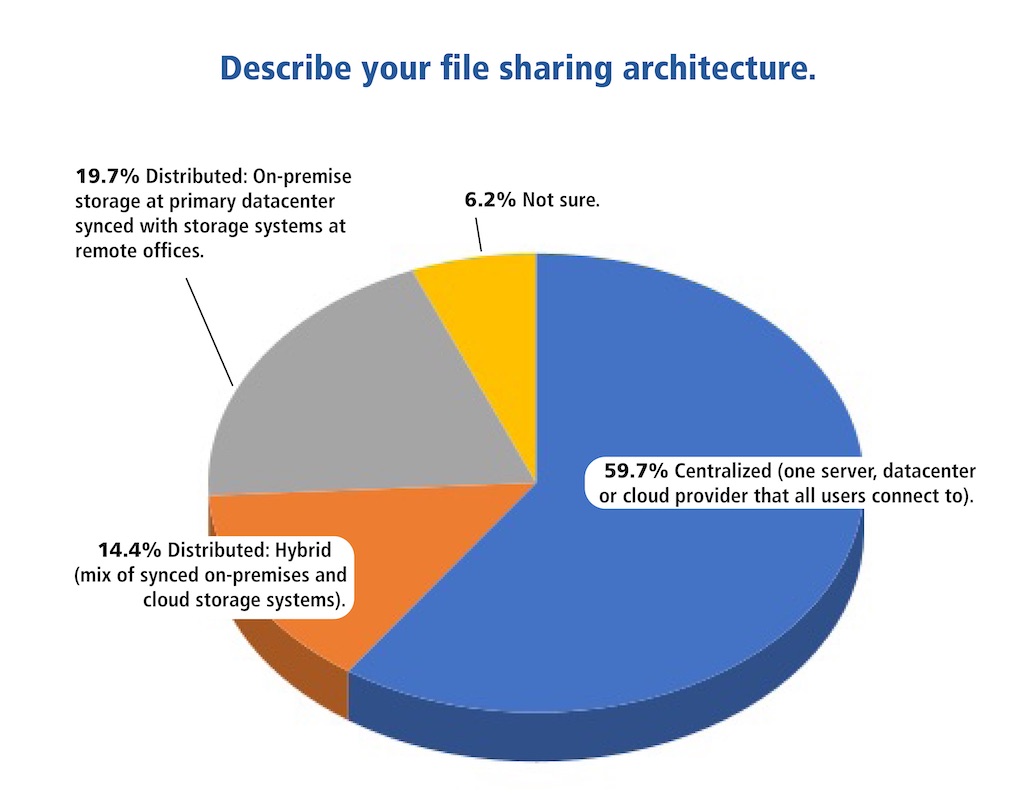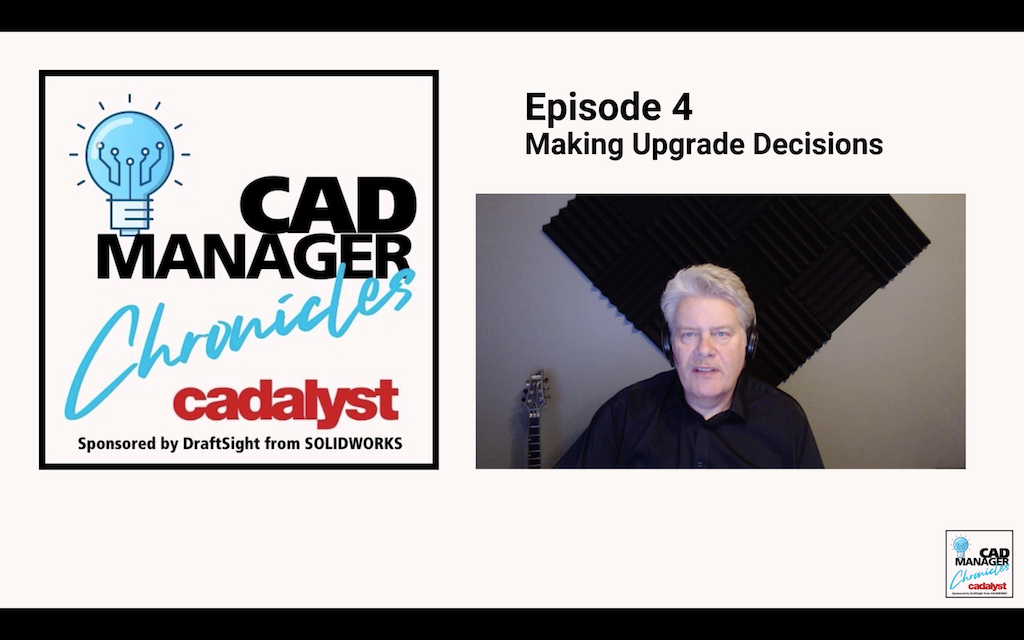One of the most asked questions I continue to receive from CAD managers is, “What are the minimum specifications for CAD workstations?” (In addition, the topic is one of the most searched on the Cadalyst.com web site.) This question comes from big company IT personnel, two-man design shops, and all sizes of companies in between. So, in this edition of the CAD Manager’s Newsletter, I’ll update my minimum workstation recommendations for 2022 and explain how I arrived at them in a format that you can send directly to your boss or IT department. Here goes.

Image source: Maksim Kabakou/stock.adobe.com.
General Workstation Truths
Every time I update workstation recommendations, I find the same two things to be true: Users want faster, more capable workstations and management wants to pay less. Yet with more of us working remotely rather than plugged into a corporate LAN, specifying workstations has become a bit tougher to answer.
Before I get into specifics, let’s lay out a few guidelines that I’ve found to be true:
- Cheap workstations don’t save you money. They only make your software operate slower and soon become obsolete.
- Upgrading later usually isn’t cost effective. The idea that you can under configure a machine today and upgrade it next year is usually fool’s gold. When you consider how quickly technology changes and consider the IT labor required to upgrade anything other than an SSD or maybe a graphics card, it just doesn’t make sense.
- Workstations are dirt cheap and help retain key staff. I see plenty of companies that have 5-year-old boat anchor computers that drive away CAD power users. I recently spoke to one user who said, “If the company can’t shell out $3,000 to update our technology, why would they ever give me a raise?”
Now that I’ve got that off my chest, let’s get into the specifics.
Processor/Cores
The processor and its cores are the heart and soul of your workstation. If you don’t get this part right, you’ve failed before you start.
The first thing to consider for most CAD programs (think AutoCAD, BricsCAD, Revit, Civil 3D, SOLIDWORKS, etc.) is that processor selection is mostly about frequency (clock rate). CAD applications tend to run on a primary core so it is still better to have fewer, faster cores than more, slower cores. There is a push towards using more cores, but the change isn’t dramatic and likely won’t be for the popular legacy tools mentioned above. And, since most high frequency processors have 8 or more cores anyway, the difference may be moot.
The parameters to consider are the base frequency (the speed of ALL the cores) and boost frequency (the maximum speed for a single core). If you consider that other applications are also running on the computer besides CAD (such as office applications, rendering tools, analysis modules, etc.). we can conclude that the best overall processor/core combination will have the highest base frequency AND the highest boost frequency. So, it would be better to have a 14-core processor at a 3.2GHz base frequency boosted to 5.5GHz than a 16-core processor at a 3.2GHz base frequency boosted to 5.0GHz, for example. For CAD, higher frequencies beat more cores every time.
Lastly, only processors with high amounts of cache and hyper-threading should be considered — this rules out Intel i3/i5 processors. What is left are the highest frequency Intel i7 and Intel i9 processors with the Intel i9’s being preferred.
Intel Core i9-12xxx series processors provide great base (up to 3.2GHz) and boost (up to 5.5GHz) frequencies and are becoming available in a wide variety of machines (even some high-end laptops) but they are slightly more expensive. To save a little money you could step down to the Intel Core i7-12xxx family which clocks in at 3.6GHz and 5.0GHz boost frequencies.
Minimum recommendation: An Intel i7 10700K processor with 8 cores would be considered the absolute minimum at this time, but Intel i9 11900 series processors provide 8 cores running at higher base and boost frequencies and are my suggested for minimum, if possible. These processors are faster (for higher productivity right now) and more capable of handling complex workloads (for updated software later). And, if you’re going to buy a workstation to lasts you for 3 years or more, doesn’t it make sense to buy something that has the latest technology today?
Senior management note: Processor selection is the one thing you can’t upgrade later, so don’t go cheap on your processor — get the higher speed Intel i9.
RAM and SSDs
Having a fast processor is only part of the performance equation because all the other systems in the workstation support the processor so it can operate at its maximum speed. Given the huge model files that CAD software produces, it stands to reason that harmonizing your processor with the right RAM and SSD systems can you get the absolute best performance from your workstation.
Consider the following:
RAM (Memory). If the processor doesn’t have adequate RAM, then it must go back and forth to the system disk to work with data. The data channel speed from the processor to the RAM is optimized to feed the processor at maximum speed where the disk speed can be substantially slower. Therefore, the RAM you install should ALWAYS be the highest speed the processor supports, and all available RAM slots should be populated with the same size RAM modules.
Solid State Disk (SSD). Of course, the processor and RAM must load all the operating system, CAD software, and CAD data from somewhere and that somewhere is the SSD. The fastest available technologies now are NVMe-based SSDs that can read/write data at roughly 3,500/2,300 MB/sec, while older SATA SSDs can only provide read/write speeds of 550/500 MB/sec throughput.
Minimum purchasing recommendations: Buy 32GB of the fastest technology RAM your workstation will support as a practical minimum for CAD. Buy a 1TB NVMe-based SSD as the boot disk so all operating system, software, and current project files are loaded from a fast SSD — secondary storage used for less frequent access can use cheaper SSD drives. These peripherals will squeeze every bit of power out of your processor for the entire life of the workstation.
Upgrade recommendations: Bump the RAM up to 64GB for high-end power users and consider the latest NVMe drives like the Samsung 980 PRO that approach read/write speeds of 7,000/5,000 MB/sec. Finally, installing multiple SSDs in a RAID configuration can also spread the load across two drives which drives speed up even more.
Senior management note: Buying the RAM and SSD systems specified will give you awesome performance for years to come without having to replace any components or spending IT time on upgrades. DO NOT SKIMP on RAM and SSD components — buy the right components now and be done with it for the life of the machine.
Graphics Processors (GPUs)
Which GPU (often referred to as a graphics card) to purchase is always a subject of debate and vendor spin but the good news is it doesn’t have to be that complicated. Here are some general questions you need to answer for yourself to decide on which GPU to specify:
- What resolution monitors will you use? Be sure the GPU can handle higher resolution 4K monitors (3,840 x 2,160).
- How many monitors will you use? Be sure the GPU can support your typical requirements which for CAD is at least two high-resolution monitors today. Be sure the connectors on the GPU (HDMI or DisplayPort) are compliant with your needs and/or legacy monitors.
- What software will you use? Purchasing a GPU that is certified for your software applications could reduce configuration glitches and problems — particularly for rendering software. But be aware that software changes rapidly and so do GPU certifications.
- Consider “gaming” GPUs from reputable companies like AMD or NVIDIA to get more bang for the buck. A recent poll of CAD managers I conducted showed 9 out of 10 had used less expensive gaming GPUs for CAD with no problems.
- Will you be doing principally 2D work, 3D work, 3D work with animations, etc.? As tasks move from 2D up to 3D with animations, the amount of GPU memory required will go up. While a base level 8GB GPU would be fine for most Revit/SOLIDWORKS workflows today, more could be required if real time animation and visualizations are required.
Minimum purchasing recommendations: Identify the GPU that supports the software applications you run now then buy the next model up — an 8GB gaming GPU like an NVIDIA GeForce 3060 is a great value for the money. And, should software needs change, you CAN upgrade a GPU — unlike processors.
Upgrade recommendations: Bump the GPU up for aggressive 3D application users that create videos, renderings, or training content.
Senior management note: If you need to cut costs on new workstations the GPU is one place to do it because general CAD/BIM users don’t need a super expensive GPU. The RAM and SSD specifications are much more important than GPUs, so do not even think about buying an expensive GPU without getting the minimum 32GB RAM and 1TB SSD recommended above.
What About Laptops?
The remote CAD worker environment brought on by COVID means more of us are using a laptop as our CAD workstation. So, what are the minimum specifications for a laptop workstation?
Simply put a CAD-capable laptop should be configured just like a desktop CAD workstation. Of course, a similarly equipped laptop will cost more than its desktop equivalent, but the performance can be just as good. There are a few caveats I’d like to mention:
- Laptops aren’t easy to upgrade or expand, so it is crucial to buy a robust machine that’ll serve you well for 3 years.
- Tasks that require more than 64GB or RAM and multiple GPUs like video rendering or training material production are still better suited to an expandable desktop machine.
- Be sure the laptop can drive an external high-resolution monitor.
- Be sure the laptop has a high-speed Thunderbolt interface port so an external dock can be used for expansion if needed.
Minimum purchasing recommendations: High speed i7 processor, 32GB RAM, 1TB NVMe SSD, and 6GB GPU that supports high resolution external second monitors.
Upgrade recommendations: High speed i9 processor, 64MB RAM, add a second high-capacity SSD, highest rated graphics available for the machine.
Senior management note: Laptops for CAD should be viewed as a high-performance workstation, not a cheap way to check email. If your CAD users are home-based, they need a powerful machine — so don’t hamper them with a cheap laptop.
Plan to Recycle
Remember that today’s high-performance desktop or laptop will be a great general performance machine in 2 or 3 years. The trick is to view each workstation you buy as having two lifetimes — a CAD life and a general-purpose life — so you can make machines serve you for 5 years before they are retired.
CAD/BIM/rendering machines are the highest performance machines you’ll purchase, so doesn’t it make sense to replace them every 2 to 3 years and then repurpose the old CAD machines for their second life? Your IT department will like this idea, so be sure to bring it up as part of your purchasing proposal.
Summing Up
I’ve seen way too many expensive engineers and architects waste countless hours working on old, slow workstations that simply aren’t up to running today’s CAD applications. I’ve also seen too many companies buy new workstations that are functionally obsolete from the start. In both cases I always ask the question, “Why is it OK to waste a $90,000 a year engineer’s time to save $3,000 on a workstation?” Ask this question repeatedly if anyone argues with your CAD workstation specifications and watch the game change.
Now that you know what you should be buying, the technical reasons for doing so and how to explain it to your boss and IT departments go get your new CAD workstations! In fact, send them this newsletter and have them email me because I’ve got your back. Until next time.
Read more about CAD Management on our CAD Management Resource Page.
Robert Green
Robert Green performs CAD programming, standardization, and consulting services globally. He is the author of Expert CAD Management: The Complete Guide. Reach him via his website (greenconsulting.com/).
View All Articles





Share This Post